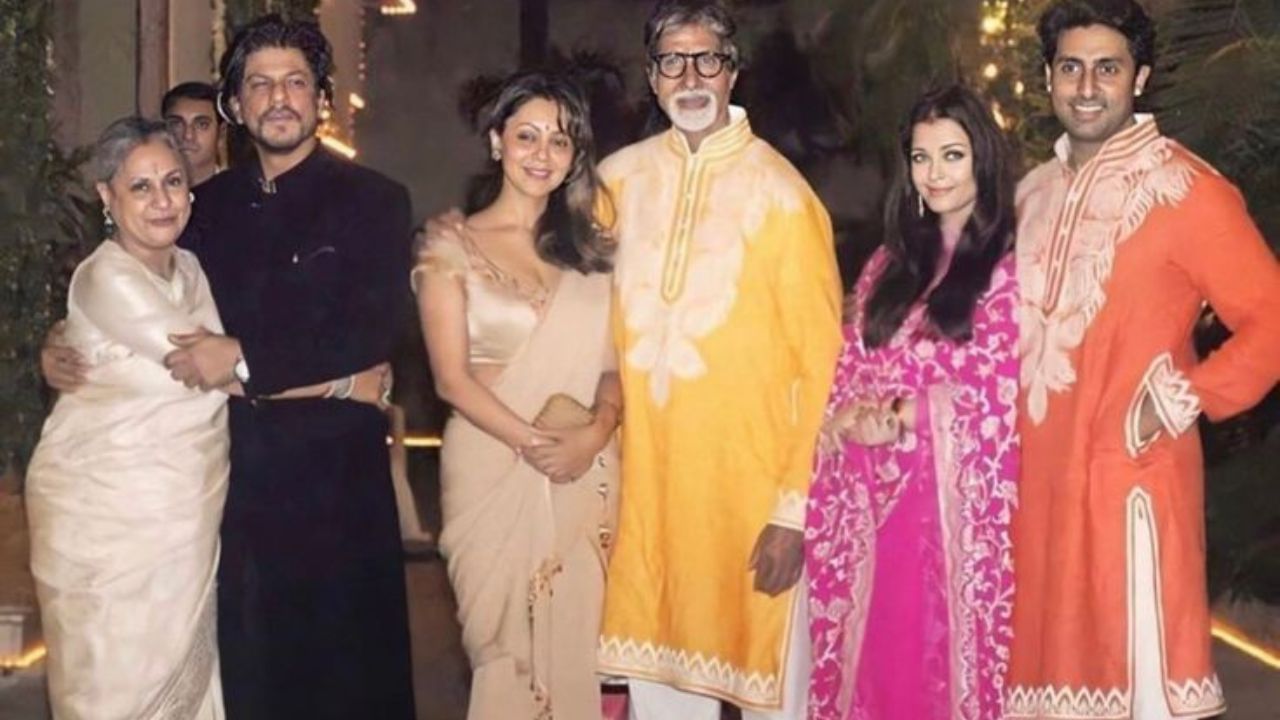New Delhi: From open-door celebrations to exclusive Instagram-ready dos, Bollywood’s Diwali parties have undergone a striking change, say industry insiders.
The festival of lights once meant something entirely different in Bollywood. In the 1980s and ’90s, Diwali parties were grand yet inclusive, bringing the entire film fraternity under one roof. Today, that warmth and sense of community celebrations have been replaced by carefully curated, selective paparazzi-designed events for social media visibility.
Bollywood misses Bachchan’s Diwali party
Taran Adarsh, a longtime industry insider, recalls a simpler time. “I remember going with my father to the Diwali parties of the film industry. It used to be simple and very low-key. There was no show-shaa like it is today. People would be in their kurta pyjamas, celebrating the festival in its true spirit. We were given crackers like phuljhadi and anaar to celebrate the festival of lights. Today, it is all about wearing your best outfits and posing for the paparazzi. Kuch bhi pehle jaisa nahi hain.”
The Bachchan residence at Prateeksha became synonymous with Bollywood’s most coveted Diwali gathering. Raj Bansal, who has been in film distribution for several decades, feels that the Bachchan family, one of the most powerful in the film industry, threw the best Diwali parties in the film industry. He added, “Diwali parties are getting very selective and only a privileged few are called to these parties. The film industry is clearly divided now. It is very obvious that certain people attending a particular celebrity’s party are not invited for those who are competitors or from a different camp.”
Every year now, the paparazzi, in a ritual of sorts, park themselves outside Ramesh Taurani’s party venue or a Manish Malhotra Diwali party and an Ekta Kapoor taash (card game) party. The grind also includes smaller celebrities having parties within their own circles.
Till only a few years ago, the Taash parties (card parties) of Bollywood were the most sought-after parties, but not anymore. Akshay Kumar winning almost all the games was part of the Bollywood legend. A senior producer said, “We would see stars and producers walking with briefcases full of cash for the taash parties, and it was those that were discussed for years. With changing times, the policy of carrying cash has stopped. Even the stakes have lowered slightly as more people are playing cards. It’s not fun anymore.”
Page 3 Diwali parties
Author Chaitanya Padukone, who attended almost all the Page 3 and Diwali parties of the ’90s, feels those days have gone and will never return. He said, “Jaane kahaan gaye woh ’90s ke din? When in the absence of cell phones, WhatsApp, Instagram, Diwali had its unfiltered emotional apnapan with that organic, personal, direct human touch! Legendary stars like Dev Anand Saab, Amitabh and Jaya Bachchan, Rishi Kapoor, Shatrughan Sinha, and iconic directors like Manmohan Desai and Mukul Anand would send personalised invitations, and they would call up or their secretaries would follow up on the RSVP. Genuine bonding and Diwali-ki-jhappi were much more evident in these celebration parties.”
He continues, “Sorry to say, since the past five years, what apparently matters most to the media agencies behind these invites is whether the media invitee is a social influencer with millions of followers (who cares, even if they include fake ones or bought ones). The tadka of synthetic sentiments backed by the flaunting of ‘dare-bare’ ethnic dhamaaka outfits, and sometimes pre-scripted red-carpet star entries, often aimed at wooing the let’s-go-viral Instagram paparazzi! Sadly, the ‘sparkling’ spontaneity seems to be diminishing. But yes, the private Diwali bonhomie and camaraderie continue in Bollywood with the card-playing sessions and strictly personal cocktail parties, where only the trusted guests get invited. I am often reminded of the famous song ‘Laakhon Taare Aasman Mein’ (Hariyali Aur Rasta, 1962) picturised on Manoj Kumar. The line in that song, ‘Dekh ke duniya ki Diwali, dil mera chup-chaap jalaa’ perfectly sums up the Diwali in the film industry today.”
Photo journalist Manav Manglani, who probably has his entire team spread out to cover the red carpet of Diwali celebrations in Bollywood, said that the parties have reduced. He reasons, “Parties over the years have decreased, and it is not the same anymore. I think the celebrities want privacy because of security issues and the digital boom. They meet in small numbers now and keep it private.”
What’s clear is that Bollywood’s Diwali parties are a mirror to the industry itself ‒ more fragmented, more image-conscious and far less spontaneous than ever before. Perhaps it’s time to bring back the apnapan that once defined these celebrations. The big question is: will someone like Mr Bachchan take the lead again and remind the industry what Diwali truly means and how it is supposed to be celebrated?
